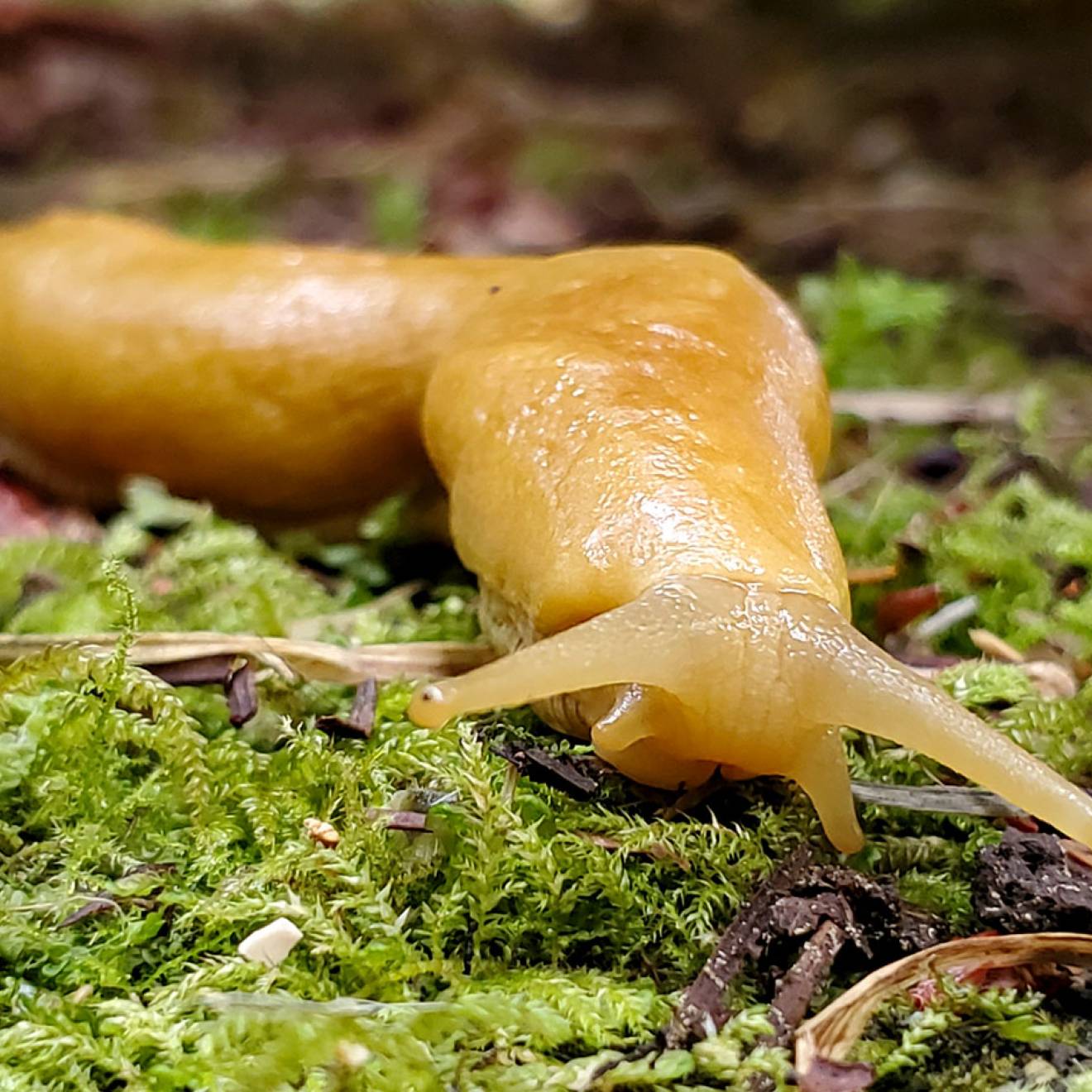Just because you’re the fastest animal on earth doesn’t mean you can outrun extinction.
In the 1970s, peregrine falcons had a very real chance of disappearing from our skies. Along with bald eagles and other raptors, peregrines had been pushed to the brink through the widespread use of DDT, an insecticide that made their eggshells so weak that they often shattered in the nest. The peregrine had been one of the most common raptors in the United States, but by the mid-60s, only 39 known breeding pairs were left — and just two of those were in California.
Fortunately, a group of UC researchers banded together to protect this fragile bird population and help it recover. Today, peregrine falcons have rebounded even beyond their historic numbers, and now thrive across the state — including at UC.
The making of a YouTube star
On the UC Berkeley campus, spring heralds thousands of students preparing to graduate and move on to the next chapter of their lives. Overlooking it all, perched on the 307-foot Campanile, is Annie the peregrine falcon, preparing to welcome her new family (now two three FOUR chicks, a first for her — click to learn more about how she will raise this new brood!).
Seeing Annie soaring above the most iconic spot on campus may be something Berkeley residents take for granted these days, but ornithologist Lynn Schofield remembers exactly when she realized Annie had arrived on the scene: January 11, 2017. That’s the day Schofield first heard the signature peregrine call and left her work for the Institute for Bird Populations to follow it.
“I’m the kind of person who has bird lists from 2017,” she says, laughing. “I’m also the kind of person who sees a peregrine falcon and puts away my work and goes to see what they’re up to. Aren’t you like that?”
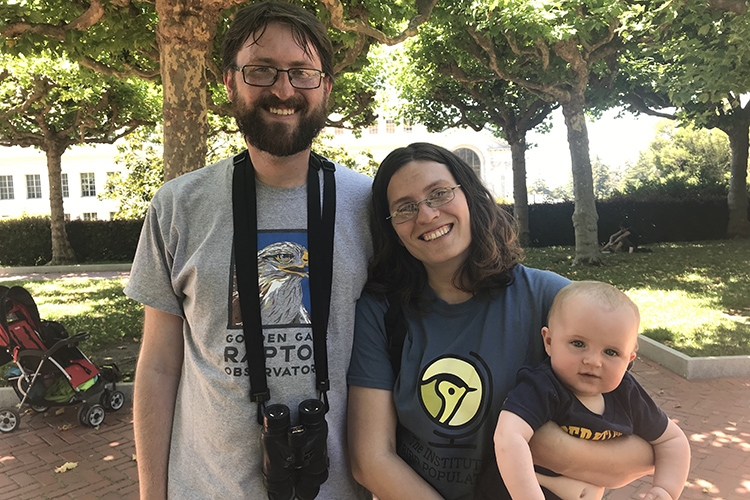
The birds she spotted were a breeding pair who eventually came to be known as Annie and Grinnell. By March, when it seemed likely they were calling the Campanile home, a small group of bird experts keenly interested in the new arrivals went up to investigate the territory and its suitability for nesting. Among the experts were Lynn and her husband Sean Peterson, who was pursuing a Ph.D. at UC Berkeley in environmental science, policy and management at the time.
“It’s a really wild journey to get to the top of the Campanile,” Peterson says. “You have to open this secret door in the wall and then climb up inside this pillar, taking your backpack off and pushing it in front of you. But we got up to the top, and looked through these slats where you could see through to the outside.”
“We could see Annie looking straight back at us. And it was just so cool to have that moment of, ‘oh, yep, there she is. She's gotta be on a nest.’”
Annie had made history as the first recorded nesting peregrine on campus, but her new home left a little to be desired. Schofield and Peterson found two eggs precariously perched in an open sandbag on a slanted roof. Two other eggs had already rolled away. Without the sandbags — a relic of an old art installation — it’s unlikely the falcons would have ever chosen the Campanile as their nest, but Schofield and Peterson knew they would have limited breeding success without some slight changes. The group helped out the young couple by placing a nest box on an even surface instead.
Annie and Grinnell had their first two chicks, Fiat and Lux, in May of 2017. Fiat survived and left the nest, but Lux tragically died after hitting a window. (UC Berkeley now has bird-proofed many of its campus windows with a number of almost invisible — to humans — adjustments). Peregrines elsewhere in the country often migrate, but the Bay Area is hospitable to the birds year-round. After Annie and Grinnell had another successful clutch in 2018, with all three chicks flying off to establish their own territories, a small group of researchers including Schofield and Peterson had the idea to install webcams to bring the birds closer to the campus community. After a crowdfunding campaign, the first two webcams were installed.
Schofield and Peterson thought the webcams would be popular among the UC Berkeley community. They did not anticipate Annie and Grinnell would have viewers tuning in from all over the world to watch live feeds of falcon behavior, or that thousands of people would share curated clips over social media. (A clip of Annie feeding her first chick in 2023 earned 127,000 views). Engaging with the falcons’ fans has become an ongoing labor of love for Schofield and Peterson, who answer questions on Twitter and Instagram, and run meme and chick-naming contests (all the names must have a UC Berkeley tie, of course) each spring.
We have our winner! After 1900 votes, Tim's "Red Eggs" meme has won 2024's March Meme Madness
— CalFalconCam (@CalFalconCam) April 8, 2024
Congratulations, Tim!
In slightly over 2 weeks, those red eggs will be getting a whole lot fluffier! pic.twitter.com/ZrJUX8pMTu
It’s been an impressive display of science communication that now goes both ways, as viewers often tip the pair, currently based in Minnesota, to interesting behaviors, potential threats, or tragedies, like when Annie’s mate Grinnell went missing, later found to have been hit by a car. It’s a reminder that these animals, which are only a screen away, live a wild life, with hazards from both the natural and man-made worlds.
Life for peregrines is always precarious — but 50 years ago, it was nearly impossible.
At the brink
Today, Zeka Glucs, a UC Davis alum and director of the UC Santa Cruz Predatory Bird Research Group, is one of a handful of people who knows what it feels like to be dive-bombed by the fastest animal on earth … while dangling from a rope.
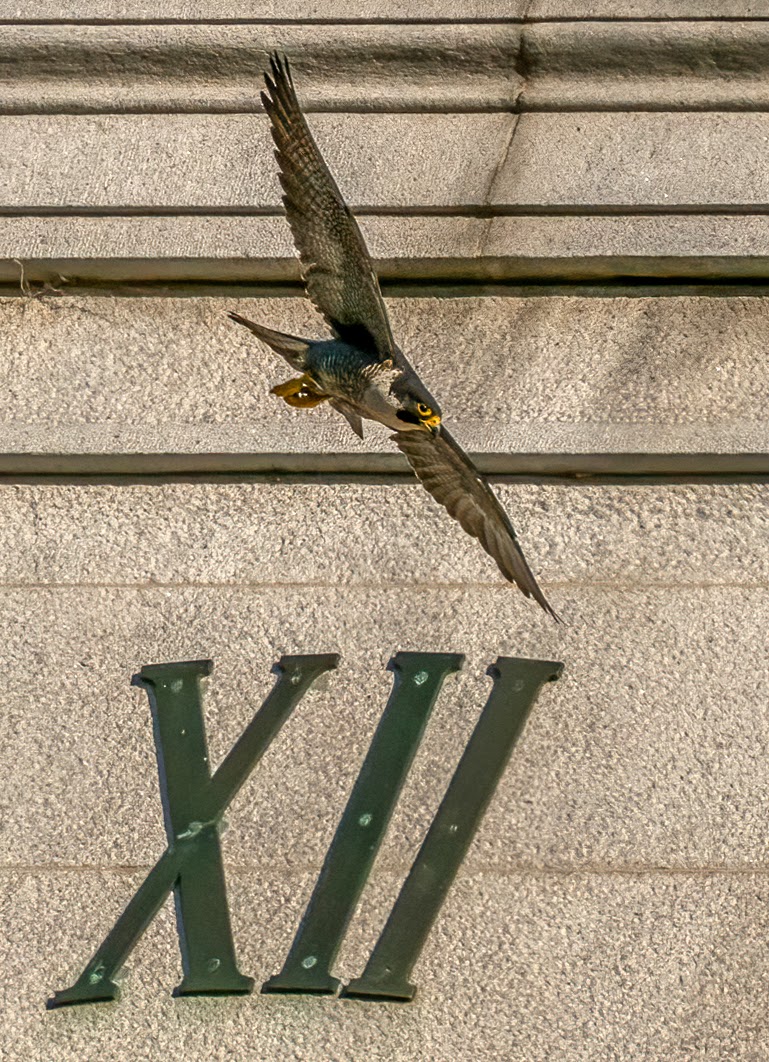
Annie’s first mate at the Campanile, Grinnell. Grinnell sadly passed away in late 2022 after being struck by a car.
“This male at this one site was just hitting me repeatedly in the back the whole time I was banding the young in the nest,” Glucs laughs. “And … it hurt, and that was not fun! Those are probably the worst for me but it’s just an indicator that I have to do this faster.”
Glucs spends a significant amount of time banding baby birds around California, but when the UC Santa Cruz Predatory Bird Research Group first started there were virtually no young to band. In 1975, peregrine falcon numbers were so low that the group’s sole mission was to reintroduce falcons to the wild in the hopes that they would survive.
Scientists first noticed the sharp decline of birds, especially raptors, in the late 1950s. A Peregrine Conference in 1965 brought together scientists and falconers to share their surveys of precipitously falling bird populations and theories on the culprit; a bevy of research pointed at DDT. DDT, or dichlorodiphenyltrichloroethane, becomes more devastating as it goes up the food chain — birds that prey on other birds, like peregrine falcons, were absorbing extremely high concentrations of the widely-used insecticide, with devastating consequences for reproduction.
At their lowest point, there were only two breeding pairs of peregrines left in California. A second Peregrine Conference in 1969 asked the governments of Canada, Mexico and the United States to protect the birds before they vanished completely. In 1972, the newly formed Environmental Protection Agency banned DDT, and a year later, the peregrines were listed as an endangered species under the newly-minted Endangered Species Act.
While the relief was necessary and welcome, the problem was that there weren’t enough peregrines to recover.
Conservationists rallied to the peregrine’s cause. Ornithologist and UCLA alum Tom Cade founded the Peregrine Fund in 1970 in an attempt to breed them in captivity and release them into the wild. Its success was no sure thing — only a few falconers in recorded history had been able to breed them in the United States, and some of those records were disputed. Cade started his efforts in the Northeast, but the birds were virtually wiped out everywhere, so no one team could do the job. The UC Santa Cruz Predatory Bird Research Group was formed in 1975 to do that work in the West.
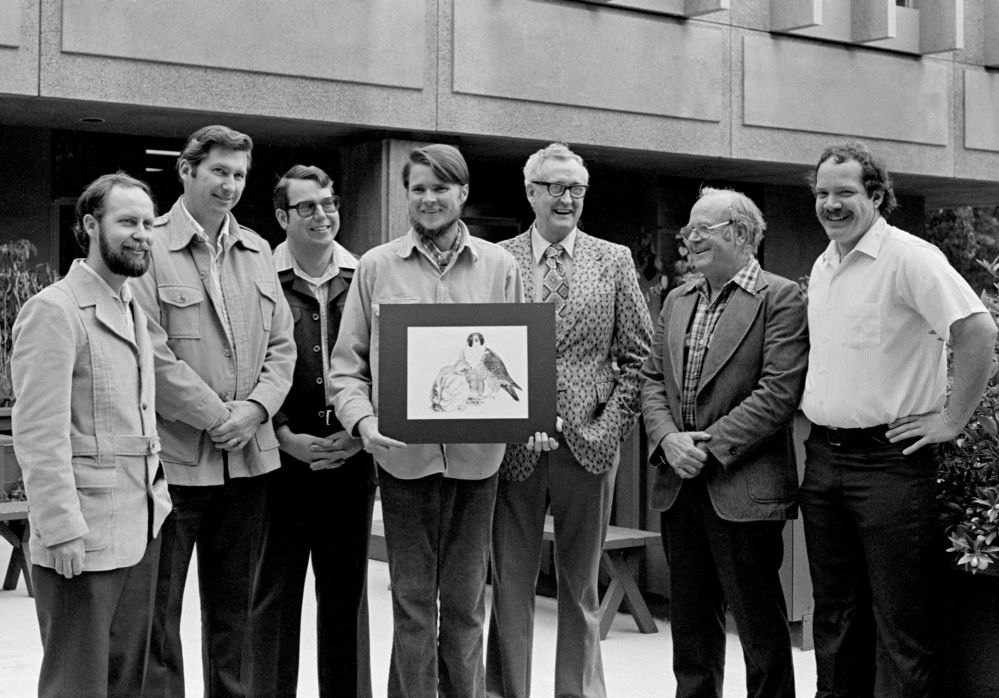
Early on, falcon scientists noticed that peregrines had evolved a mechanism that could help with the recovery process.
“Peregrine falcons do something really cool called double or even triple-clutching,” Glucs explains. “So if you remove eggs early enough in the breeding season, they're going to go ahead and lay a replacement clutch of eggs. Our group took advantage of that by removing those eggs, artificially incubating them, and then having them lay another clutch of eggs so we could get double the reproductive value from that pair. We only had a few pairs left to work with, so it was really important to create a high quantity of chicks.”
UC Santa Cruz became a peregrine egg factory, incubating and hatching, incubating and hatching on campus. It also became a study in nature versus nurture in animal behavior. Some chicks were fostered by peregrines or prairie falcons. But others, given the lack of parents to go around, were raised in nests where they were fed by peregrine puppets. Eventually, once they grew big enough to hunt on their own, scientists moved them to release sites, and the birds learned to fly and hunt by themselves. “That was very successful,” Glucs adds. “Obviously there’s a huge genetic component to learning how to be a wild peregrine.”
Peregrines were delisted from the federal and state endangered species lists in 2006, after their rebound found them dispersing across the country, often to places they’d never been seen nesting before — urban environments. As it turns out, California’s long, populous coast is perfect for them.
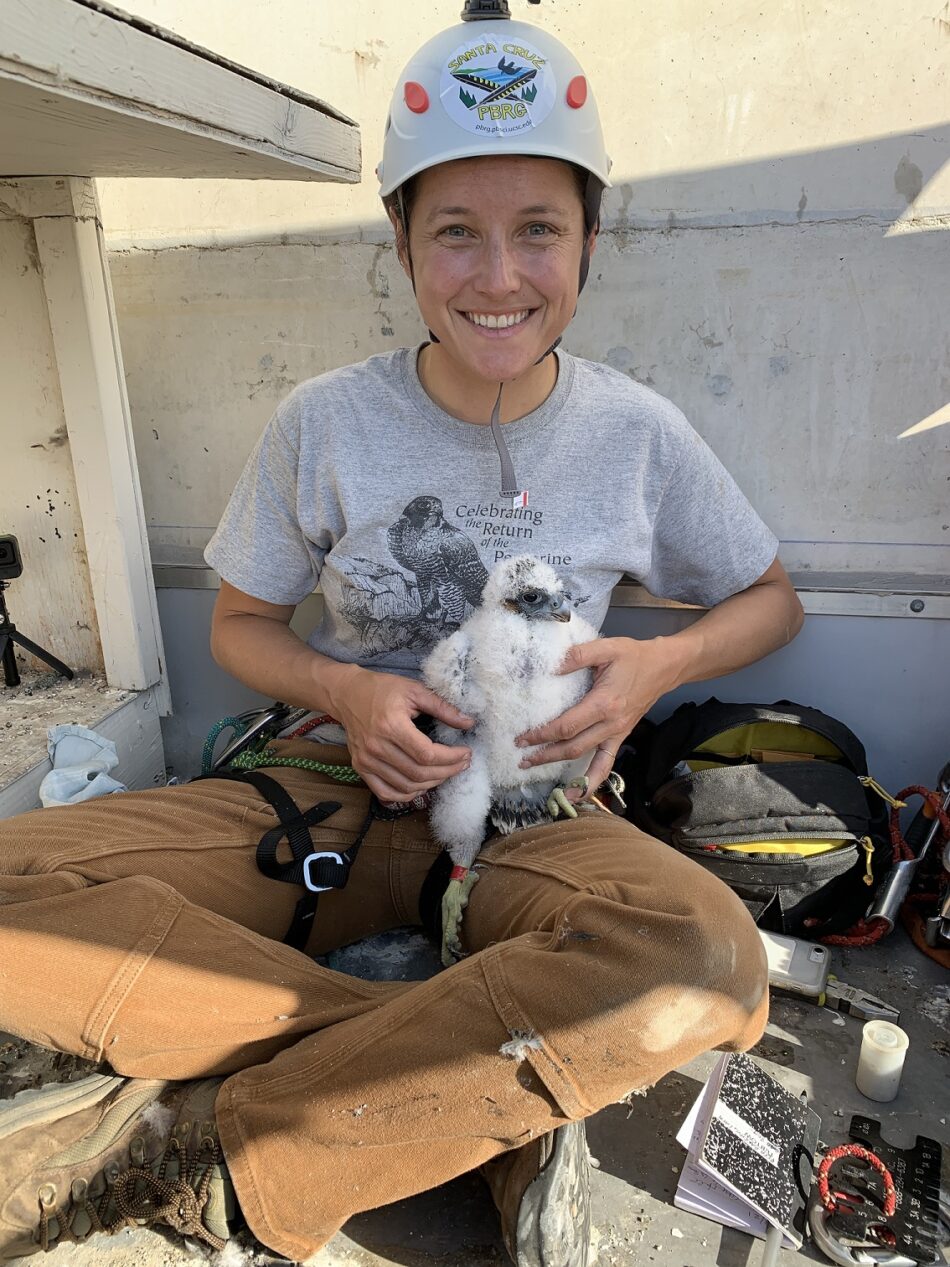
Zeka Glucs with a banded peregrine falcon. Learn more about how bird banding works at UC Santa Cruz Science Notes.
“We started to see them showing up on bridges, on buildings, in abandoned nests, on electrical towers, any structure that was over 60 feet tall that had a good view of some foraging territory in the Bay Area. We've got all the shoreline peregrines love, shorebirds and waterfowl to hunt, so they love these artificial cliff landscapes that are near the sea. They almost immediately took to those sites and have become sort of an urban predator in our region.”
It also gives them an amazing stage on which to be superstars.
Invested in the future
Watching the bay from Annie’s perch atop the Campanile is a stunning sight — miles of shoreline, impressive sunsets, fog rolling in. It’s hard not to think Annie is a lucky bird — and in many ways, she is.
The Campanile checks all the boxes for a peregrine, Schofield notes, especially now that Annie has a stabilized nest. On a clear day, you can sometimes see more falcons flying by, checking out the territory. And Annie’s closely watched life yields all sorts of interesting data that would otherwise be impossible to pick up, like the minutiae of incubation and diet. Perhaps more grippingly for the average viewer, her love life has also been on full display.
Before Grinnell was hit by a car in 2022, Annie and her longtime mate were Berkeley’s favorite couple; when Grinnell was struck, both the campus and the town mourned alongside Annie, as did viewers in places as distant as London and Australia, who had tuned into the feed for comfort during the pandemic. But in another promising sign of falcon recovery, viewers watched as Alden swooped in to help care for Annie’s eggs within a day. Sadly, Annie’s mates since Grinnell have only lasted one chick-raising cycle each. Alden and subsequently Lou — both attentive fathers — eventually disappeared from the Campanile for reasons unknown, although their latest threat, bird flu, is a possibility. This winter, viewers overheard Annie chatting offscreen with a new mate, Archie, who moved in shortly after. Annie’s continued success and 20 chicks, so far, are the mark of a well-lived falcon life. Her followers are lucky, too.
“I think people really crave being able to interact with nature. To see that kind of natural world and have that be right in the backyard of one of the biggest universities in the country, in one of the biggest metropolitan areas in the country, is amazing,” Peterson says. “You know, I can look up and see the world's fastest animal. How cool is that? That's just awesome to have in your backyard.”
Joining Annie and Archie are their chicks, two of which hatched yesterday, April 22. The UC Berkeley campus will be celebrating their arrival (and hopefully, that of their siblings) with Hatch Day, an all-day party at the Berkeley Art Museum and Pacific Film Archive, featuring a live feed of the nest projected on a giant outdoor screen along with falcon experts, a live raptor visit and free stickers for visitors.
Learn more by visiting the BAMPFA website and find out how you can help birds out with some easy bird-proofing techniques for your windows from Cornell Lab.
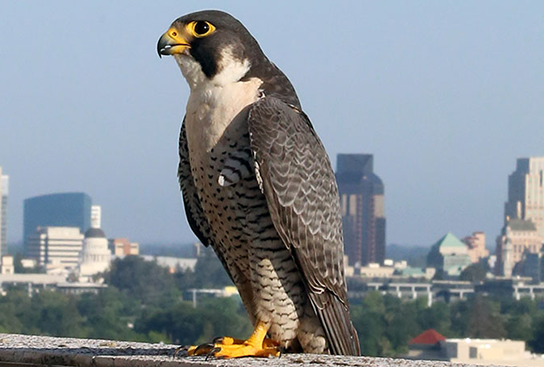
Another spot peregrines like? The UC Davis Health campus. Peregrines have called it home since at least 2015. This year’s nest was not successful but you can keep tabs on the peregrines on a livestream here.

